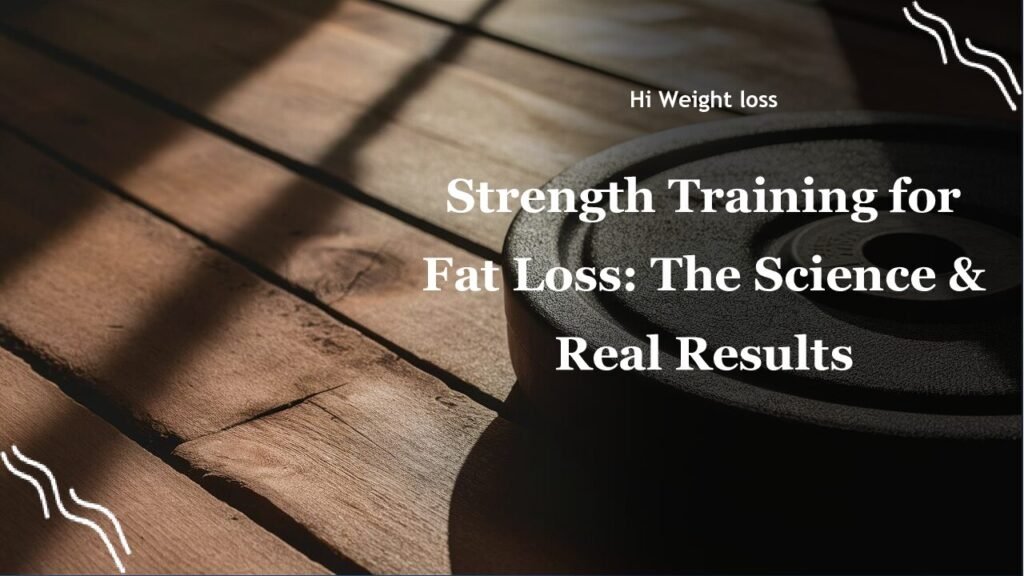“`
Struggling to lose those stubborn pounds, and feeling like endless cardio is the only way? Many of us believe that spending hours on the treadmill is the ultimate fat-burning solution. But what if I told you there’s a more effective and sustainable approach that not only burns fat but also builds strength? This article will explore how *strength training* can be a powerful tool for fat loss, and we will delve into the science behind why lifting weights is more than just about building muscle. I’ll share some personal experiences as well, and we will look at how this approach can transform your body and your mindset.
Does Strength Training Burn Fat? The Science Behind the Burn
The short answer is a resounding yes! Strength training is not just about building bulging biceps; it’s a powerful fat-burning tool. But how does it actually work? Let’s unpack the science. It is very interesting. I remember when I first started incorporating strength training into my routine, I was amazed at how my body composition shifted, I didn’t just become stronger, but I was also burning fat even when I was resting.
The Afterburn Effect (EPOC): Burning Calories After Your Workout
Ever heard of the *afterburn effect*? Scientifically called Post-Exercise Oxygen Consumption (EPOC), this is when your body continues to burn calories at an elevated rate for hours after your strength training session, even when you are just chilling on the sofa. This is because your body is still working hard to recover and repair muscles after the workout. A friend of mine, Sarah, was a cardio fanatic, and when she tried strength training for the first time, she was thrilled that the fat burning did not stop even after she stopped training.
Muscle Mass and Metabolism: A Calorie-Burning Engine
When you build muscle through *strength training*, you’re actually increasing your basal metabolic rate (BMR). This means that you burn more calories, even when you’re at rest. Your body uses more energy to maintain muscle mass, hence transforming your body into a fat-burning furnace. I remember reading about a study which showed that people with more muscle mass have a higher metabolism, which is why it’s important to continue with *strength training* over the long term.
Think of your muscles as an engine that constantly needs fuel, and that fuel is fat! The more muscle mass you have, the more fat you burn. It’s that simple.
Cellular Changes: How Muscles Talk to Fat Cells
Interestingly, *resistance training* triggers metabolic adaptations in your fat tissue. During your strength training workouts, your muscles release substances that instruct fat cells to start the fat-burning process. This process is not just confined to your working muscles but happens throughout the body. I have read that the cellular-level changes from *strength training* are very profound, helping to reduce fat even in areas you might not be directly working during your training sessions, and these changes are definitely not something that happens when you are just doing cardio.

Long-Term Fat Loss: The Power of Increased RMR
*Strength training* promotes long-term fat loss by increasing your resting metabolic rate (RMR). As you gain more muscle mass, your RMR goes up. This leads to higher fat burning even when you’re not working out. Over time, you create a body that is a more efficient fat-burning machine. It’s not just about the workout, but about the transformation that happens from day to day. My personal experience echoes this: since I have consistently incorporated *strength training*, I find that my body has become more efficient at burning fat, and it has become much easier to maintain a healthy weight.
Strength Training vs. Cardio: Which is Better for Fat Loss?
While cardio is great for burning calories during your session, studies show that *strength training* can lead to significant fat loss, and the results are comparable to cardio or aerobics. For example, a systematic review and meta-analysis found that participants lost around 1.4% of their total body fat through strength training alone, which is similar to the fat loss achieved through cardio or aerobics. I’ve seen so many people who swear by cardio, and while it’s not bad, they don’t often experience as much of a body composition transformation as people who embrace *strength training*. I also remember reading a Business Insider article on how strength training is better than cardio for fat burning. What do you think?
How Does Strength Training Help with Weight Loss?
*Strength training* helps with weight loss primarily by building muscle, which increases your resting metabolic rate and this means you are burning more calories throughout the day, even when you are just chilling out. This is in contrast to cardio, which primarily burns calories during the exercise. Another important aspect is that *strength training* helps you maintain muscle mass while losing fat. This process is key to changing your body composition. My own experience clearly demonstrates this, and it is important for long-term weight loss.
Does Strength Training Increase Metabolism for Fat Burning?
Absolutely. As mentioned above, building muscle through *strength training* directly increases your basal metabolic rate (BMR). The more muscle you have, the more calories your body needs to maintain itself. Therefore, *strength training* can indeed increase your metabolism for fat burning, even when you are not in the gym. This is a crucial factor that often gets overlooked. A lot of people think that if they are not actively training, they are not burning fat, but that is not the case. I found this to be one of the key benefits when I added *strength training* to my routines.
Consider this table to summarize the key differences:
| Feature | Strength Training | Cardio |
|---|---|---|
| Calorie Burn During Workout | Moderate | High |
| Afterburn Effect (EPOC) | High | Moderate |
| Impact on Muscle Mass | Increases Muscle Mass | Minimal |
| Long-Term Metabolic Rate | Increases Resting Metabolic Rate (RMR) | Minimal impact on RMR |
| Fat Loss | Effective, including long term fat loss | Effective for calories burned during the workout |
Getting Started with Strength Training for Fat Loss
Ready to start reaping the fat-burning benefits of strength training? Here are a few tips to get you going:
- Start slow, especially if you are new to *strength training*.
- Focus on compound exercises, such as squats, deadlifts, and pushups. These engage multiple muscle groups and burn more calories.
- Proper form is important to avoid injuries, and it is better to start with a lighter weight before increasing the weights.
- You can find a suitable routine that works with your schedule and your level of experience.
- Be consistent! Consistency is important when it comes to making progress, so make sure you set yourself a schedule that you can keep up with in the long run.
Also, remember that it is important to listen to your body. Do not push yourself too hard, especially when you are just starting. It can be a little overwhelming at first, but as you progress, you will start seeing the results!
Strength Training, Body Recomposition, and Stubborn Fat Loss
Yes, *strength training* can help burn fat and build muscle simultaneously, a process known as body recomposition. This is different from just losing weight because it focuses on changing your body composition. A lot of people think they need to lose weight, but what they actually need to do is build muscle and reduce fat. My personal experience is a perfect example. I didn’t lose a lot of weight on the scale, but the changes in my body composition were impressive.
Conclusion
So, does *strength training* burn fat? Absolutely! It’s not just about building muscle; it’s about transforming your body into a more efficient fat-burning machine. Through the *afterburn effect*, increased muscle mass and metabolism, cellular changes, and long-term increases in your resting metabolic rate, *strength training* provides a multifaceted approach to fat loss. Remember the story of Sarah who switched from pure cardio to *strength training*? She didn’t just get stronger, she also saw significant changes in her body composition, and I’m sure you will also have similar positive experiences if you stick with it consistently. Don’t let the myth that cardio is the only way to lose fat discourage you! Take the leap, pick up those weights, and experience the amazing changes your body is capable of. If you are ready to start seeing a real transformation, then consider incorporating *strength training* into your fitness routine. Remember to share this article with your friends who are also curious to know more about *strength training* and its fat-burning benefits!
FAQ
How often should I strength train for fat loss?
Aim for at least 2-3 times per week, with rest days in between to allow muscles to recover. You don’t want to overtrain your body.
Can strength training help me lose belly fat?
Yes. While you cannot spot-reduce fat, overall fat loss from strength training will reduce belly fat as well. The cellular changes triggered by resistance training work throughout the body, including the belly area. If you are consistent in your training, you will definitely see the changes over time.
Do I need to use heavy weights to burn fat with strength training?
Not necessarily. Focus on using weights that challenge you while maintaining proper form. You can also start with bodyweight exercises and increase the resistance gradually over time. It is really about the right amount of stress that you apply to your muscles.
Is strength training alone enough for fat loss?
While strength training is effective, a balanced approach that includes a healthy diet and some cardio can further enhance your fat loss results. A combination is always good for overall health and wellbeing. Don’t neglect cardio, but don’t only do cardio as well!
Where can I learn more about strength training?
You can check out some of these resources:
- AthleanX’s article on whether lifting weights burns fat
- BSC Supplements’ blog on resistance training and fat loss
- Men’s Health UK article on lifting weights for fat loss
“`



